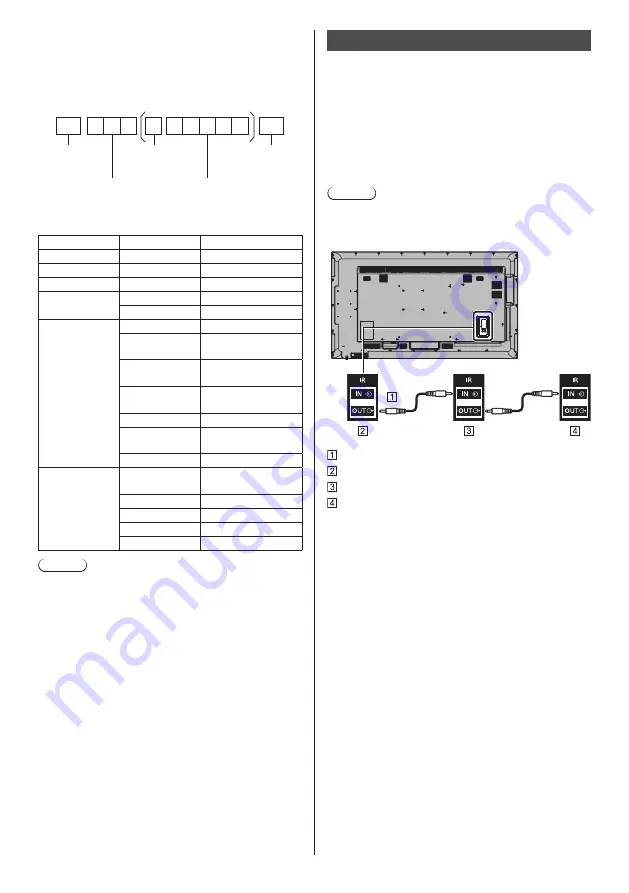
English
22
Basic format for control data
The transmission of control data from the computer
starts with a STX signal, followed by the command, the
parameters, and lastly an ETX signal in that order. If
there are no parameters, then the parameter signal does
not need to be sent.
STX C1 C2 C3
P1 P2 P3 P4
:
P5
ETX
Start
(02h)
3-character command
(3 bytes)
Colon
Parameter(s)
End
(03h)
Command
Command
Parameter
Control details
PON
None
Power ON
POF
None
Power OFF
AVL
***
Volume 000 ‒ 100
AMT
0
Audio MUTE OFF
1
Audio MUTE ON
IMS
None
Input select (toggle)
HM1
HDMI 1 input
(HDMI1)
HM2
HDMI 2 input
(HDMI2)
DV1
DVI-D IN input
(DVI-D)
PC1
PC IN input (PC)
VD1
VIDEO input
(VIDEO)
UD1
USB input (USB)
DAM
None
Screen mode select
(toggle)
ZOOM
Zoom1
FULL
16:9
NORM
4:3
ZOM2
Zoom2
Note
●
If multiple commands are transmitted, be sure to
wait for the response for the first command to come
from this unit before sending the next command.
When sending a command which does not require
parameter, a colon (:) is not needed.
●
If an incorrect command is sent by mistake, this
unit will send an “ER401” command back to the
computer.
●
In Standby condition (power OFF with remote
control), the unit responds to PON command only.
●
Consult your local Panasonic dealer for detail
instructions on command usage.
For more details, visit the following web site.
http://panasonic.net/prodisplays/
IR IN/IR OUT terminal connection
Connect the mini plug (M3) cable from the IR OUT
terminal of the first display to the IR IN terminal of the
second display.
The infrared signal of the first display is sent to the
second display.
In this case, the IR (infrared ray reception on the remote
control sensor) on the second display does not operate.
Repeating the above connections enables the daisy
chain connection.
Note
●
Connection cables are not supplied with this unit.
●
Daisy chain connection is possible only between the
displays of the same series.
Stereo mini plug (M3) cable (commercially available)
First display
Second display
Third display






























